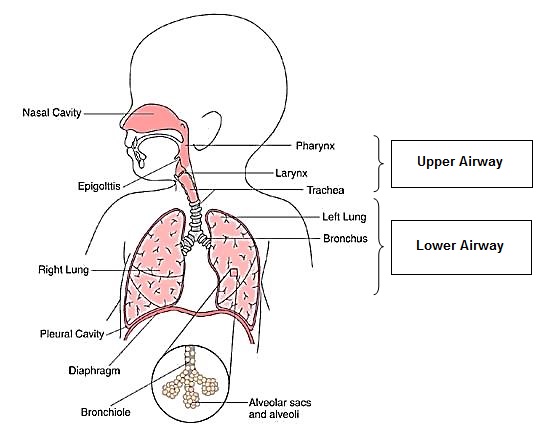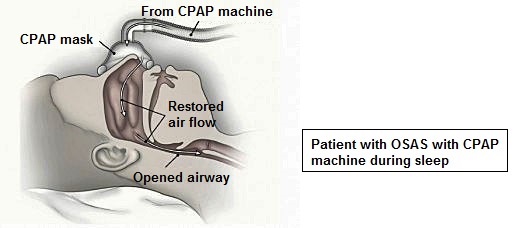Snoring and Obstructive Sleep Apnea (OSAS) in Children
Sleep is an important human behaviour. A dequate sleep is important for human beings to function properly in their daily activity. Adequate sleep is important for children in terms of duration and quality so that they can grow, develop and function properly.
Obstructive sleep apnea syndrome is a form of sleep disorder found in children. It is due to obstruction of the upper airway during sleep resulting in inadequate air reaching the lung during breathing. Air contains oxygen which is a very important element for the proper function of the organs especially the brain. Inadequate oxygen will cause many body organs unable to function properly.
The obstructed upper airway will produce snoring sound during sleep. Around 10% of children frequently snore during sleep. However only 10 -20% of them have OSAS.
Airway and lung

Causes and risk factors of OSAS
OSAS is due to a significant obstruction of the upper airway during sleep. In normal children, the obstruction can be due to either enlarged adenoid tissue or enlarged tonsil or both. In obese children, the increase amount of fat tissue around the upper airway also contributes to upper airway obstruction.
In children who have abnormal shape of the face like Down syndrome, it results in narrow and crowded space of the upper airway causing it to be easily obstructed during sleep. In children with muscle disease such as muscle weakness the airway is easily obstructed since the muscle cannot prevent the airway from collapsing during breathing
Other risk factors for OSAS in children are exposure to cigarette smoke, history of asthma or allergic rhinitis, recurrent tonsillitis and being of male gender.
However in some children there is no obvious explanation why the upper airway is obstructed during sleep.

When to suspect your child is having OSAS
The main symptom is snoring. Other sign and symptoms are:
- Restless sleeper and preference to sleep in prone position.
- Breathing heavily during sleep.
- The breathing ceases temporarily during sleep and sometime produce coughing, gagging like sound before regain back the breath.
- Have frequent awakening during sleeping.
- Bedwetting
- Difficulty to awake in the morning.
- Look tired, sleepy and can complain of having headache when wake up in the morning.
- Sleepy during daytime and sleep inappropriately during daytime such as sleeping in class or in the car when going to and back from school.
- Frequently need nap at daytime and the amount is not appropriate to age.
- Decrease or poor in school performance.
- Unable to cope with school lesson and have poor memory especially with school lesson.
- Look tired, lethargy, have poor initiative.
- Hyperactive child, difficult to control, very moody, easily throw temper tantrum.
- Frequently having sneezing, runny nose and like to breathe through the mouth.
Complications of OSAS
OSAS can cause long-term complications. This include :
- Decrease in school performance and learning problems.
- Behavioural problem such as hyperactive, temper tantrum, moody, lack initiative, persistent tiredness
- Hypertension
- Heart Failure
Treatment and Prevention
Children with OSAS can be treated appropriately according to the causes. However they should be seen by doctors in order to assess the severity of the OSAS. These children may need a few investigations to confirm OSAS and to look the effect of the OSAS. Some of these children may need sleep study to confirm and to assess the severity of OSAS.
Treatment depend on the severity and these include operation to excise adenoid and tonsillar tissue (adenoidtonsillectomy), using breathing machine (CPAP and BiPAP machine), weight loss or nasal spray.
OSAS can be prevented by having good habit such as proper dietary habit that prevent obesity, regular exercise, do not smoke, proper treatment of allergic rhinitis and asthma.

Conclusion
Parent should aware that if their child snores during sleep, there is possibility that their child has OSAS and thus need further assessment. OSAS that left untreated can affect the health of the children.
Source : https://bit.ly/3gsK0lb


